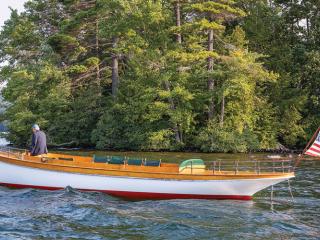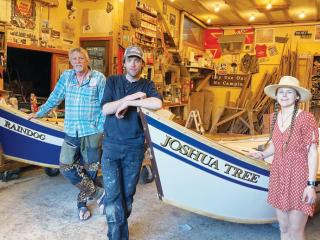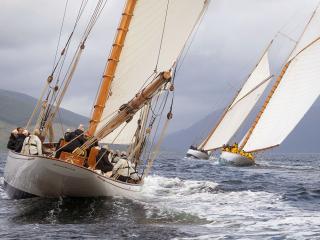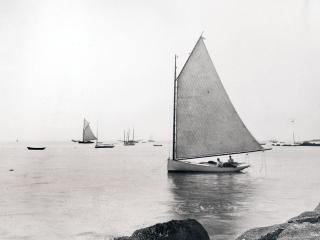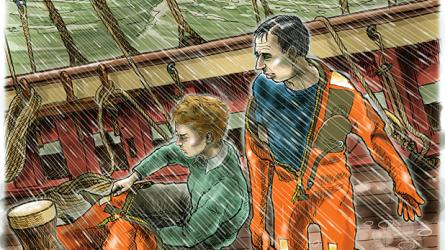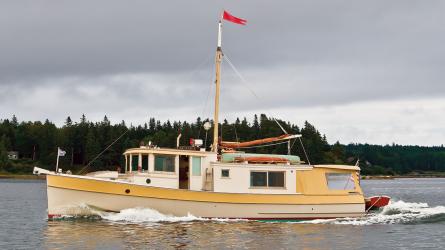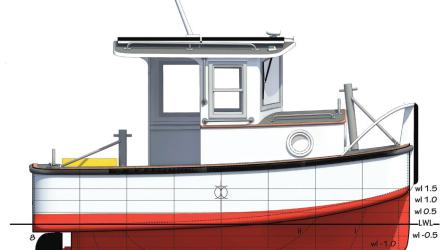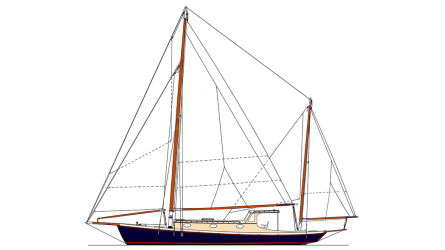November / December 2022
A Deep Canyon Connection
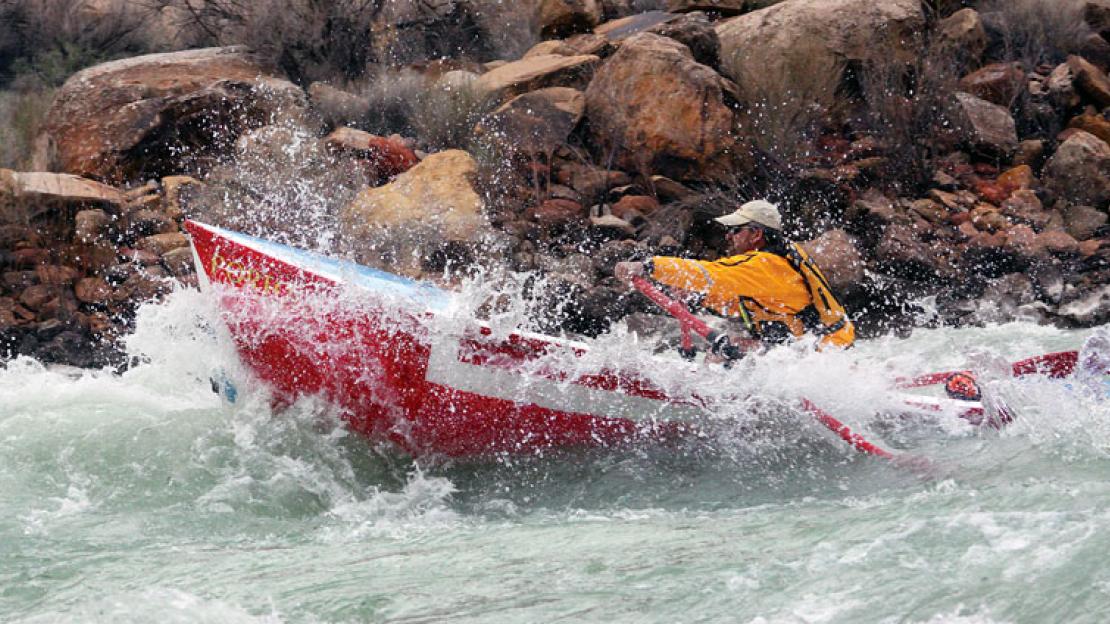
DAVE MORTENSON
Greg Hatten ran the replica PORTOLA in a Class 8 rapid at mile-mark 90, called Granite, 50 years after Martin Litton ran the original through the very same rapid at much the same water level. It is one of the most demanding rapids in the entire Grand Canyon and requires technical moves, perfect timing, and lots of nerve as the hydraulics of the current pull everything toward the canyon wall on the river’s right bank.
At the rim of the Grand Canyon, the overlook of multicolored canyon walls and buttes is one of the most spectacular sights in North America and one of the seven natural wonders of the world. A full mile below the rim on the canyon floor, the Colorado River cuts a slender silver ribbon between the rust-colored cliff walls beneath a cobalt blue sky. Yet this wonder, which President Theodore Roosevelt praised as being “unparalleled throughout the wide world,” nearly became just another large freshwater reservoir in the American southwest.
In 1964, just one congressional vote stood between the creation of two dams that would have flooded a place that is considered a worldwide attraction and a national treasure. The native Anasazi, who lived there for thousands of years, considered it holy ground. Approvals for the building of Marble Canyon Dam and Bridge Canyon Dam were almost foregone conclusions in the dam-crazed era of the 1960s, and the appropriations vote in the fall of ’64 was considered by most to be a mere formality, like so many dam votes before it. Those two dams were part of the Pacific Southwest Water Plan that had been drafted by the U.S. Bureau of Reclamation and approved by elected politicians who wanted more dams to support urban growth and generate revenue for the states and cities of the Southwest.
One man with passion, purpose, and a heart for the environment put a stake in the ground and declared the sacrifice of the Grand Canyon was too high a price for progress. But what could one man possibly do to stop a powerful congressional plan and two dams that were already at the beginning stages of construction? When the man is Martin Litton, it turns out the answer is a lot.
In the 1950s, Martin was a writer for Sunset magazine in California, and the first time he rowed through the Grand Canyon, in 1956, he used a boat that was ill-suited for the enormous waves and treacherous rapids of the Colorado River. A few years later, while on a writing assignment in Oregon, Martin saw a wooden boat whose design would change river-running in the Grand Canyon and ultimately save the canyon from destruction. The wood boat he saw was called a McKenzie drift boat, and it wasn’t just its simple, clean lines, and sexy curves that caught his eye. It was the way the boat moved with grace and style through the technical rapids and extreme rock gardens of the McKenzie River. The unique boats elevated river-running to an art form, and Martin was so sure the design characteristics would transfer from the Pacific Northwest to the Colorado River that he commissioned two boats, on the spot, to be built by an Oregon boatbuilder named Keith Steele in time for his 1962 trip.
To read the rest of this article:
Click the button below to log into your Digital Issue Access account.
No digital access? Subscribe or upgrade to a WoodenBoat Digital Subscription and finish reading this article as well as every article we have published for the past 50-years.
ACCESS TO EXPERIENCE
2-for-1 Print & Digital Subscription Offer
For this holiday season, WoodenBoat is offering our best buy one, get one deal ever. Subscribe with a print & digital subscription for $42.95, and we’ll give you a FREE GIFT SUBSCRIPTION to share with someone special.
1 YEAR SUBSCRIPTION (6 ISSUES)
PLUS ACCESS TO MORE THAN 300 DIGITAL BACK ISSUES
PRINT+DIGITAL $42.95
Subscribe
To read articles from previous issues, you can purchase the issue at The WoodenBoat Store link below.
 Purchase this issue from
Purchase this issue from
